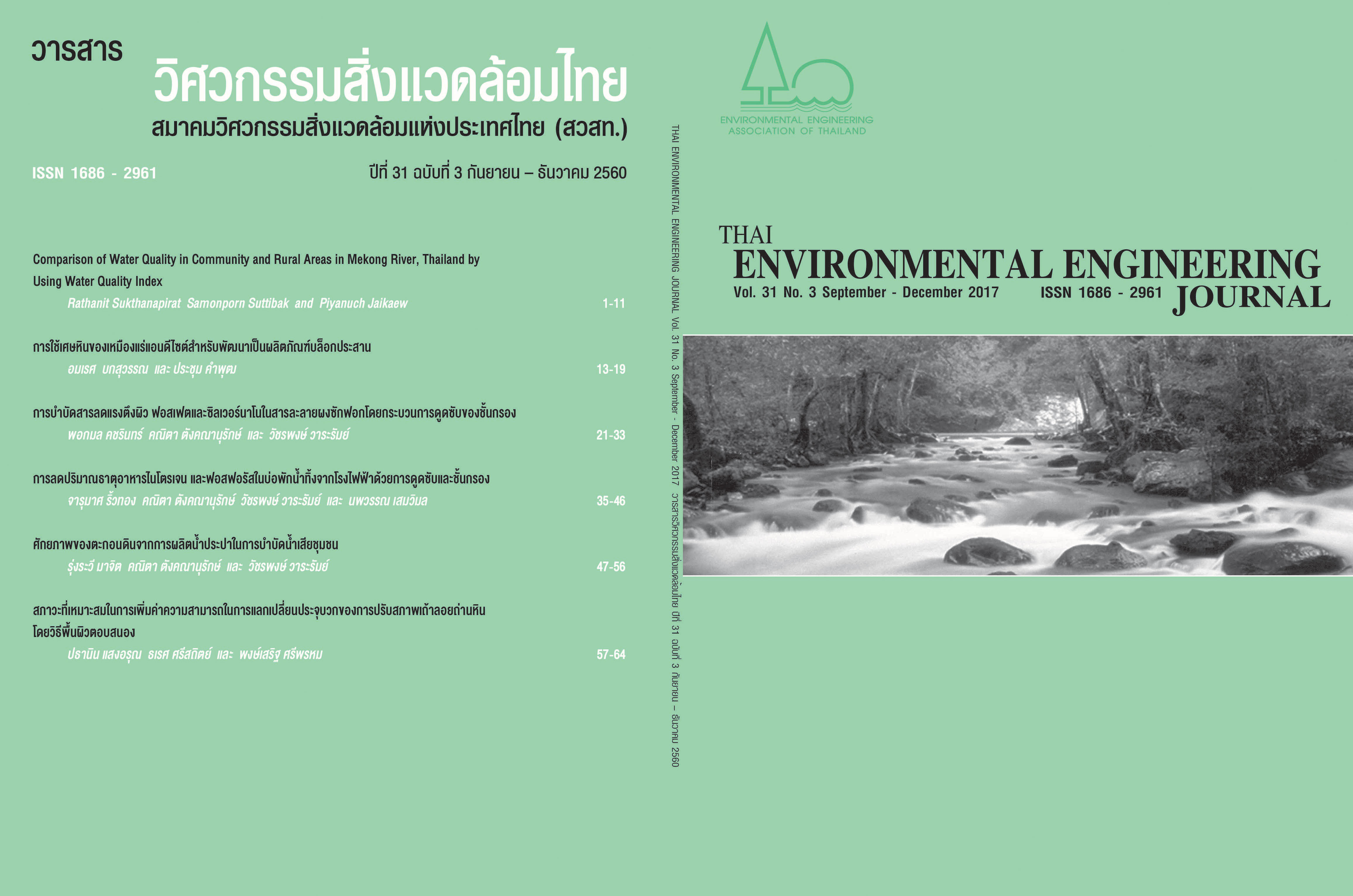Using Waste Rock of Mining Andesite for Development of Interlocking Block Product
Main Article Content
Abstract
The objective of this research was to use waste rock of mining andesite for developing interlocking block product. Waste rock of mining andesite is waste from the grind rock process for construction which is coarse aggregates replaced stone dust from all limestone mine. The ratio of mixer was cement per andesite waste equal as 1: 6: 0.16, 1: 7: 0.17, 1: 8: 0.18, 1: 9: 0.19, 1: 10: 0.20 and 1: 11: 0.21, respectively. Mixed and casted interlocking block using compressors hand as interlocking block sample, a block size of 10 cm x 20 cm x 10 cm, testing according to various standards of TCPS.602-2547, testing thermal conductivity standard of ASTM C177. Result of test found that when mixing andesite increasing volume result to dry weight per pack and compressive strength are reduced. While ratio of water absorb is increase and thermal conductivity has approximate in all mixer ratio. Concluded that andesite waste is total mass for produce interlocking block has properties to standard of all ratios and has properties of insulation like interlocking block.
Article Details
References
[2] American Society for Testing and Materials (ASTM). 2010. Standard Test Method for Steady-State Heat Flux Measurements and Thermal Transmission Properties (ASTM C177 – 10). Annual Book of ASTM Standards. Philadelphia.
[3] Chindaprasirt, P and Jaturapitakkul, C. 2012. Cement Pozzolanic and concrete. 7th edition. Thailand Concrete Association. Bangkok. (in Thai)
[4] El-Alfi, E.A., Radwan, A.M. and Ali, M.H. 2004. Physico-mechanical properties of basalt bricks. International Ceramic Review. 53(3): 178-181.
[5] Youssef, N.F., Osman, T.A. and El-Shimy, E. 2004. Utilization of granite–basalt fine quarry waste in a ceramic floor tile mixture. Journal Silicate Industries. 69(1-2): 7-13.
[6] Suweero, K. and Khamput, P. 2018. Utilization of rhyolite fragment for light-weight cement-bonded fiberboard product. 4th EMSES 2018, Kyoto University. Japan. April 3-6. p.94.
[7] Young, Hugh D. 1992. Hyper Physics. University Physics. Addison Wesley.


